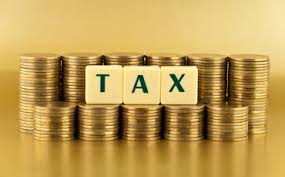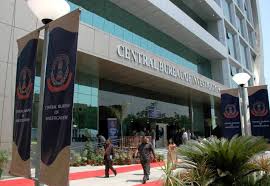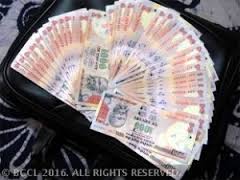 Even as the government grapples with incomplete details and mismatch errors in refund claims by exporters, it has refunded Rs 4,000 crore out of verified claims of Rs 5,000-6,000 crore on account of payment of Integrated GST (IGST) on exports under the goods and services tax (GST) regime. Incomplete details in refund claims and mismatch errors by exporters are creating a hurdle in processing the remaining refund amount, Central Board of Excise and Customs (CBEC) Chairman Vanaja N Sarna said, adding that the exporters should come forward to rectify the errors as officials are working overtime to ensure a smooth payout of the refunds. “There are mismatch issues for which exporters should come forward and sort out. They are being requested to come forward through SMS/emails to sort out issues which are remaining. We are working 24×7 to allow refunds to exporters. They have to come and rectify their mistakes to get the refund,” Sarna told The Indian Express.
Even as the government grapples with incomplete details and mismatch errors in refund claims by exporters, it has refunded Rs 4,000 crore out of verified claims of Rs 5,000-6,000 crore on account of payment of Integrated GST (IGST) on exports under the goods and services tax (GST) regime. Incomplete details in refund claims and mismatch errors by exporters are creating a hurdle in processing the remaining refund amount, Central Board of Excise and Customs (CBEC) Chairman Vanaja N Sarna said, adding that the exporters should come forward to rectify the errors as officials are working overtime to ensure a smooth payout of the refunds. “There are mismatch issues for which exporters should come forward and sort out. They are being requested to come forward through SMS/emails to sort out issues which are remaining. We are working 24×7 to allow refunds to exporters. They have to come and rectify their mistakes to get the refund,” Sarna told The Indian Express.
Government officials said that the total refund claims received by GST Network (GSTN) are approximately of Rs 13,000 crore, out of which claims worth only Rs 5,000-6,000 crore have been verified so far and forwarded to CBEC for facilitating disbursement of refunds. Separately, the government has also refunded Rs 2,000 crore as input tax credit to exporters, Sarna said.
Under GST, exporters are required to pay IGST on exports and then claim refunds. The second type of refunds to exporters under GST involve refund of GST paid on purchase of inputs.
For refund of IGST paid on exports, the exporters are required to file GSTR 3 B and table 6A of GSTR 1 on the GSTN portal and shipping bills on the customs EDI (electronic data interchange) system. For refund of the unutilised input tax credit on inputs used in making exports, the exporters are required to file Form GST RFD- 01A on the GST portal. In instructions issued to Customs authorities by CBEC on October 9, the CBEC had said that filing of correct EGM is a must for treating shipping bill or bill of export as a refund claim.
Explaining the errors filed in the refund claims, Sarna said that in some instances, exporters have filled metric tonne (weight) of exported goods instead of the refund amount. Or, in some cases, the shipping bill has a number in place of an alphabet. “Some things are missing, there are some blank spaces, the system won’t accept until that gets corrected. That rectification has to be done by the exporters,” she said.
Similarly, there are EGM (Export General Manifest) mismatches or invoice mismatches in the refund claims by exporters. “I have been asking CBEC officials to reach out to exporters. I recently visited Hyderabad, there we have started sending e-mails to exporters that this is the flaw, please come forward and repair it, so that we can give the refund. CBEC officials are calling people and asking them to come and rectify their mistake,” Sarna said.
As per a CBEC release dated November 29, the quantum of IGST refund claims as filed through shipping bills during July to October 2017, was approximately Rs 6,500 crore and the quantum of refund of unutilised credit on inputs or input services filed on GSTN portal, was about Rs 30 crore. The refund claims have subsequently been revised upwards to around Rs 13,000 crore, but only about half of them have complete details to facilitate complete verification, officials said.
A study as part of RBI’s Mint Street Memos series had earlier this month had stated that the implementation and refund delays under the new indirect tax regime of GST seem to have led to working capital constraints for firms, which in turn might have hurt their exports in October 2017. However, the subsequent initiatives taken by the government since then appear to have significantly alleviated exporters’ concerns which got reflected in the exports growth pick up in November and December 2017, it had said.
The study had indicated that a short-term liquidity shock impacted firms in the export sector, with the firms with high working capital/sales ratio such as such as, petroleum and gems and jewellery sectors hit the most due to the liquidity constraints.
Source: Indian Express





